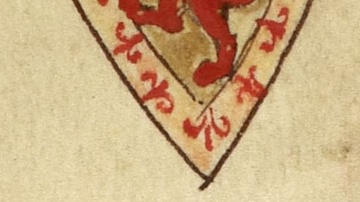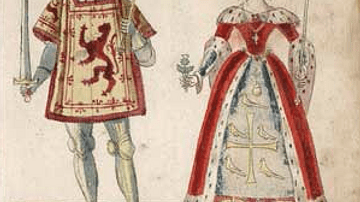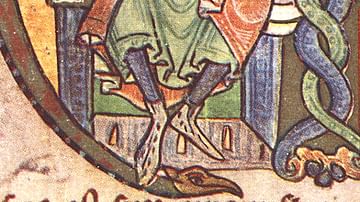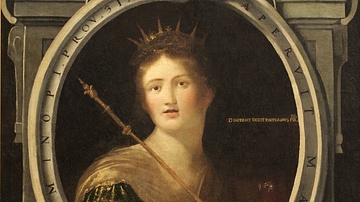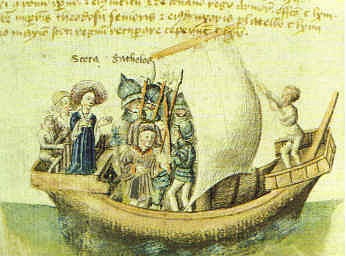
The Scotichronicon is a 15th Century CE legendary chronicle by Walter Bower (c. 1385 – 1449 CE) which recounts the history of Scotland and the Scottish people. The Scotichronicon begins with the Biblical Creation story and ends with the death of James I in 1437 CE. With the exception of a few quotations, the 14 books of the Scotichronicon are written in Medieval Latin.
The beginning chapters of the Scotichronicon are widely accepted to be a mythological re-imagining of Scotland's past. Key narrative elements of the Scotichronicon, such as the Scottish exile from Egypt and Goídel Glas' (aka Gathelus) invention of the Gaelic language, are derived from reinterpretations of Biblical narratives and fragments of Gaelic myth.
Background & composition
The Scotichronicon is a continuation of Chronica Gentis Scotorum by John of Fordun (c. mid-14th Century CE – 1384 CE), which is the earliest known complete history of the Scots. By the time of his death in 1384, Fordun had completed the first five volumes of his chronicle and recorded history from the Book of Genesis to the reign of David I of Scotland (r. 1124 – 1153 CE), leaving the rest uncompleted. Sir David Stewart of Rosyth commissioned Bower to complete the Chronica Gentis Scotorum. Bower based his 14-volume Scotichronicon on Fordun's completed work and the materials he had compiled for the rest of his planned chronicles, inserting his own research here and there.
Scota & Gaelic origins
The Scotichronicon begins with the settlement of Ireland by the Egyptian princess Scota and her husband Goídel Glas. Earlier traditions identify Goídel Glas as the the son of Scota by the Scythian king Nel (aka Neolus). Goídel Glas is credited with creating the Gaelic language out of the most perfect parts of each of the 72 languages created after the Biblical “Confusion of Tongues” which occurred at the Tower of Babel.
According to the Scotichronicon, Scota and her followers were exiled from Egypt, and wandered in search of a new homeland for 440 years. The followers of Scota then began calling themselves the Scoti in her honour. This is an inaccurate etymology for the term Scoti which was a Roman ethnonym for the Gaels. The earliest known usage of the term is from the 3rd Century CE, although its true etymology remains unclear.
The 440-year exile of the Scoti deliberately parallels the 40-year exodus of the Israelites, making a backstory of truly Biblical proportions. After Scota and Goídel Glas establish a kingdom in Ireland, some of the sons of Scota lead an expedition to Scotland where they establish a kingdom named in her honour. Thus, the etymology of Scotland and the Scottish people are neatly tied into this pseudo-Biblical tale.
Chronicle of the Scottish Kings
As a chronicle of the kings of Scotland, the Scotichronicon bridges the gap between history, myth, and propaganda. Through a complex and highly fictitious reckoning of ancient bloodlines and exoduses, the Scotichronicon constructs an ancient, Biblical origin for Scotland's nobility. Scotland's rulers are all claimed as descendants of Scota down to the 13th Century CE. The Scotichronicon begins its complex genealogy with Fergus I, the first king of Scotland, who was described as a direct descendant of Scota and Goídel Glas. The Scotichronicon claims Fergus I emigrated to Scotland from Ireland and began his reign around 330 BCE.
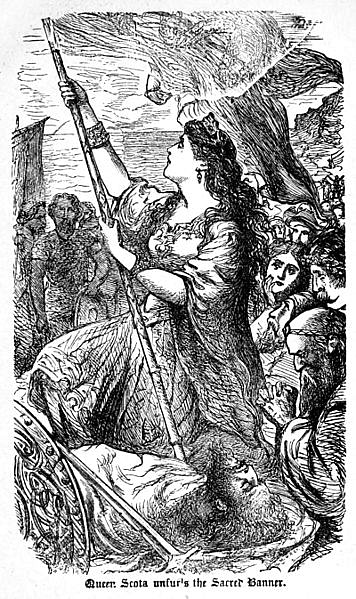
Just as importantly, the apocryphal legend of Scota makes the claim that the Scots predate the arrival of the Picts and Britons to Scotland, adding to the nationalist themes of the Scotichronicon. This view of Scottish history quickly became popular and was accepted more or less uncritically until the 18th Century. Modern historians have disregarded several elements of the Scotichronicon's chronology. A more plausible contender for the title of first king of Scotland is Fergus Mór mac Erc who reigned around the end of the 5th Century CE, but even his historicity is murky.
The Wars of Independence & the making of Scottish identity
The Wars of Independence (1296–1328 CE and 1332–1357 CE) ended a period of relative friendliness between England and Scotland, and plunged both countries into nearly 60 years of war. This conflict centred around Scotland's claim to independence, and the English claim over the Scottish kingdom. The Scotichronicon chronicles these events in its later books, but it is heavily influenced by post-war anti-English sentiments.
The aftermath of the wars left deep scars in both countries, and was a major force behind the creation of Scottish national identity. The earliest histories of Scotland date from the late 13th Century, although these were not as encyclopedic as the Scotichronicon. The Scotichronicon must be understood as a part of a cultural and literary landscape in which a distinct Scottish national and cultural identity was being formed.
By tracing Scottish heritage back to the mythological Scota, the Scotichronicon created a historical narrative for Scottish nationalist sentiments. The Scotichronicon puts the limelight on legendary Gaelic figures like Goídel Glas and Fergus Mór mac Erc, although Fordun and Bower's accounts differ from those found in early Medieval Irish chronicles like the 11th Century CE Lebor Gabala Erenn.
Bowers and Fordun were also influenced by Geoffrey of Monmouth's 12th Century CE Historia Regum Brittaniae (“History of the Kings of Britain”), which constructed a British national identity around the mythological Brutus of Troy, legendary progenitor of the Brits. Indeed, the Scotichronicon's version of events was in some ways a reaction to Monmouth's pedigree of British identity, by creating an alternate origin for the Scots. Bowers actually goes so far as to compare his version of events with Monmouth's, declaring his own to be the more accurate account in Book II of the Scotichronicon.
Modern reception
The Scotichronicon's age and background make it an essential source of medieval Scottish history, even if it is an unreliable narrative of ancient history. Both Fordun and Bowers included historical and legendary accounts in their composition, but Bowers is widely considered to be a less competent and reliable historian than his predecessor.
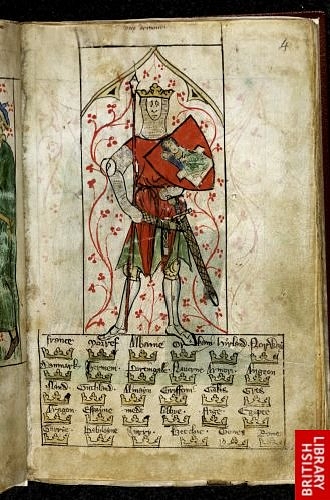
The Scotichronicon is also notable as a container of early variants of many British legendary traditions. For example, the Chronica Gentis Scotorum and Scotichronicon contain variants of the King Arthur legend in which Arthur usurped the throne from his nephew Mordred, the rightful king.
The Scotichronicon also contains one of the earliest mentions of Robin Hood, who is described as “a famous cut-throat” from the 12th Century CE, who was celebrated by common folk ballads in Bowers' day. Bowers' insistence that the legend of Robin Hood was only known by the common people has been taken to mean that it was originally an invention of common bards, rather than the aristocracy.
Overall, although it was not as rigorous or as accurate as modern historians might hope, especially with regards to its earliest books, the Scotichronicon was an incredibly important piece of early Scottish literature.

